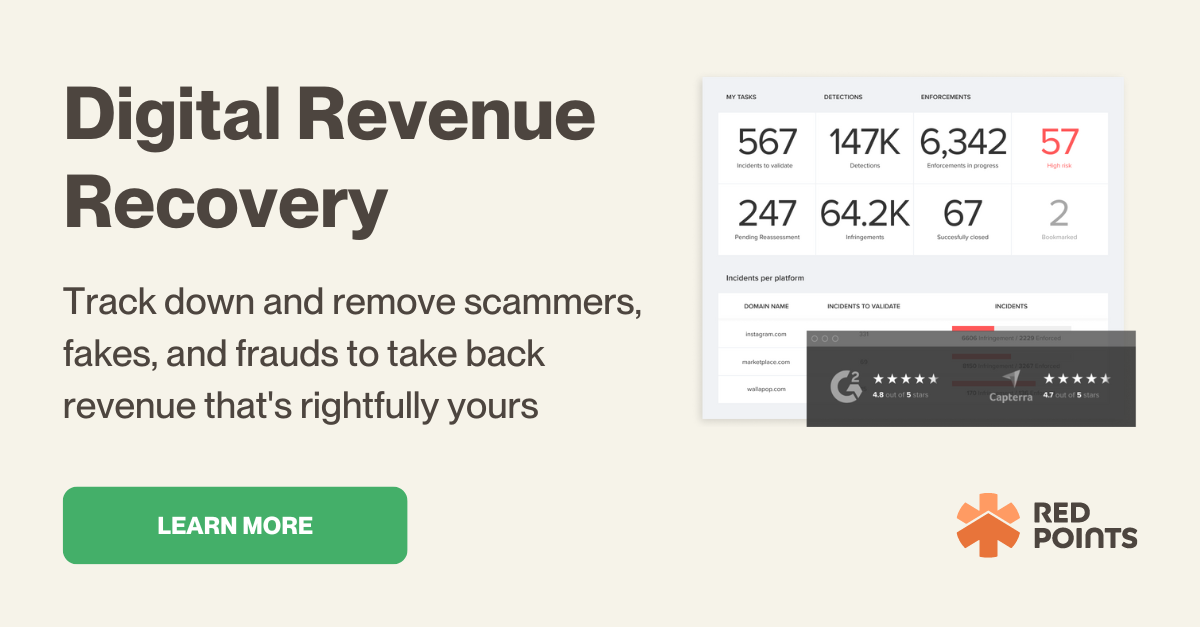Competition in ecommerce is defined mostly by price, and this is already a well-established reality. As a result, the heated competitiveness is on display in this competition. In light of this dynamism, how do ecommerce providers position themselves?
In order for retailers to feel more accountable for keeping their end of the bargain, more brands should check MAP compliance.
In this post, we’ll examine the Minimum Advertised Price, or MAP for short, and see why brands require a policy for MAP monitoring.
What is MAP monitoring?
Minimum Advertised Price (MAP) monitoring is the practice of tracking the pricing of products across digital channels in order to spot changes in the market.
It’s unusual to discover a company that doesn’t care about the image it projects. What does this have to do with the monitoring of Minimum Advertised Prices?
To put it another way, the Minimum Advertised Price (MAP) refers to the lowest price at which a store can publicly promote the availability of a product or service for sale. Online merchants are urged by manufacturers to protect their brand positioning and long-term economic viability through legal or unwritten agreements.
Some of the stores may be breaking the MAP rule. To survive in today’s hyper-competitive online marketplace, some retailers have had little choice but to cut the price of their items. Large e-commerce sites like Amazon, for example, have high rates of this type of infringement.
It’s critical to remember that MAP agreements give suppliers the strongest protection against price infractions. So, you’ll need to implement a stringent MAP monitoring system for all of your online vendors. You’ll be able to observe the benefits of MAP monitoring when you do things like:
- Creating a level playing field for all participants in the market.
- Creating a strong brand identity
- Relationships with retailers that are dependable
- Helping small and medium-sized internet shops compete more effectively with larger ones
- Achieve a level of stability
- Prevent price reductions
Why do you need to monitor your MAP compliance
It’s apparent that online price management has a major impact. It’s a unanimous opinion. Pricing, however, isn’t only a revenue generator, as many people mistakenly believe. Furthermore, pricing is a potent marketing tool and an important part of a company’s brand identity. It has a significant impact on the perceived value of a brand, and when prices are so widely varied across various markets, it nearly always has a negative effect on how customers see a certain brand.
Suppose that after a product from your brand has been listed at a cheaper price, online customers expect to see the same pricing everywhere. As a matter of fact, individuals have an incredible recall when it comes to associating the costs to your brand. As a result of this experience, people won’t be able to forget your brand’s name when they think about it in the future.
To survive in today’s hyper-competitive e-commerce market, one online merchant may establish a cheap price for their own products. This might lead to a potentially deadly chain reaction. If you’ve invested a lot of time and money into building a strong brand reputation, you don’t want it tarnished by not keeping an eye on your brand’s prices at retail outlets. Regaining your brand’s reputation may require a lot of time and work.
In light of the ramifications of pricing violations, it is clear to begin MAP monitoring.
What does a MAP monitoring service do?
The monitoring, notifying, and analyzing functions of the Red Points Monitoring software make up the MAP monitoring system.
Monitor
Maintain a watchful eye out for violations of the Minimum Advertised Price (MAP), as well as identify and monitor reseller pricing, inventory levels, and potentially damaging price cuts.
The most important procedures are as follows:
- Site-specific bots perform compliance checks on domains by scanning for MAP infractions.
- Define what to look for depending on a re-breach seller’s minimum advertised price (MAP), price compliance, stock levels, or discounts, as well as domain names.
- Find out who is selling your items without your permission and watch out for unscrupulous business associates.
Notify
By following these steps, you can quickly transform MAP violation occurrences into actions:
- The MAP monitoring system examines situations in great depth using picture cards, assisting you in determining the appropriate response at the appropriate time.
- Resellers who are not in compliance can be notified using MAP monitoring software’s individualized email alerts.
- Determine who on your team is authorized to send out warnings to your resellers if they do not comply with the regulations.
Analyze
Obtain complete transparency regarding the manner in which your items are being offered online by:
- Obtaining a comprehensive perspective of possible MAP infractions through the utilization of data that is up to date.
- Exporting data and utilizing our application programming interface (API) both allow you to manipulate data in a manner that is tailored to your specific needs.
MAP Monitoring Best Practices
1. Gather all of the information you’ll need to keep track of, such as product names, SKUs, authorized resellers, etc.
Getting all of the items and product-related data you need is the first step in building up an efficient reseller pricing monitoring program.
Product identifiers, such as SKU numbers, ASIN numbers (for Amazon items), ePID numbers (for eBay products), GTIN numbers, UPC numbers, or even your own serial numbers, might be included in this list.
Other product-related intellectual property may also help you immediately identify your items in an advertisement or on a reseller’s sales website, such as trademarked language, proprietary photos, and videos.
If you have a list of approved dealers or merchants, you may want to include them as well. You’ll want to keep an eye on those resellers’ websites, as well as any online marketplaces where they have a presence, as the initial group of websites to keep an eye on.
2. Make sure that your monitoring system covers as much of the Internet as you can.
Your items may appear on thousands of websites at any given time. If your items are offered by dozens of merchants and each of them has an online presence spanning dozens or possibly hundreds of third-party sites and marketplaces you’ll want to monitor them.
Price monitoring must cover a lot of land to be effective, but then how frequently would you actually go through all of those adverts and listings? Why not do it now? When your company isn’t looking, keep in mind that some stores may purposely lower their stated pricing to levels below the allowed limits in hopes that your company won’t notice.
What this implies is that you can’t just tell your employees to enter in the names of a few of your items or a few ASINs whenever they have a few spare minutes to hunt for reseller price breaches. Both the system and the effectiveness of such a procedure would be undermined.
Consequently, to ensure that your firm has the best possible chance of identifying MAP pricing policy infractions, you’ll need to create a method that lets you monitor as much of the Internet as possible, as often as feasible.
So you’ll need to lay down a structure and a cadence for how best to search for the information you’re looking for. As a result, think about issues like the following:
Were we planning on using existing employees or bringing in new ones to keep an eye on the Internet for possible infractions at various times of the day?
How do we want these in-house team members to perform their monitoring? Should they check out the eCommerce pages of each authorized reseller on a daily basis? Throughout the course of the day? Is there a specific time of day that you prefer?
Each time an employee observes a violation of our pricing policies online, what procedure should we develop to ensure they have sufficient documentation and are able to determine which firm is violating our pricing policies and then take the required action?
Red Point’s automated price monitoring and enforcement software, for example, is a great option for outsourced price monitoring to enforce MAP pricing because these operations would be far too time-consuming and expensive to do manually.
3. Monitoring prices should be set up to capture any and all rule violations, so double-check that it does.
It is up to your organization to decide whether or not to approve some of the resellers’ tactics for selling your items that we’ve described so far.
Does your policy allow a “Add to basket for the best price” offer, even if the in-cart pricing ends up being lower than your insurance’s allowed price?
This means that if you don’t want to enable it, your pricing monitoring program will also have to take this into consideration. Your employees will also have to stop at each sales page and verify that no policy-violating pricing is being offered in their shopping carts if your procedure involves scanning the Internet manually for violations.
As you can expect, this will cause an even greater slowdown in your already sluggish manual monitoring procedure. A pricing monitoring and enforcement tool would be the better option.
4. Set up a system for keeping track of any infractions that occur.
Regardless of how you set up your price-monitoring method, you’ll need to decide how you want to document each infraction, whether it’s done manually or through an automated platform.
Regardless of your technique for enforcing the law, you should constantly keep track of any infractions that occur. If you plan to take legal action against the offending reseller, or if you just want a record of the violation for any future action, this documentation will come in handy.
When your organization reports a violation, what does it mean for your business? You’ll need to design a system, and a set of guidelines, which may include:
- A snapshot of the reseller’s page which clearly shows that your pricing policy has been violated.
- A timestamp on the screenshot, to verify when the infraction took place. If you need to demonstrate a pattern of infractions over time, this could be useful.
- URL of the page (either the reseller’s own eCommerce site, an online marketplace, or another third-party web page).
You’ll also need to devise a procedure for disposing of the paperwork you collect:
- Should an examination of all other sites and marketplaces where a reseller appears to be automatic and rapid take place if an employee uncovers a violation from a reseller? After all, if you’ve found a corporation breaking your policy on one website, you have every reason to suspect they are committing the same infringement elsewhere.
- Where will you keep these documentation files for preservation and retrieval purposes?
- Will you develop an electronic filing convention — such as establishing a new folder for each infraction, with unique screenshots and supporting materials placed in the folder?
- For the sake of redundancy, will you instruct your workers to make and store numerous copies of any files or folders that include evidence of the violation? What will happen to the backups?
5. Make sure you are monitoring for all kinds of illegal activity, not exclusively pricing.
Resellers may misrepresent your items in ways other than merely providing them at costs lower than your policy’s authorized levels if you can adequately monitor their presence online.
A gray-market merchant, for example, may advertise your items on Amazon or eBay with inaccurate product specifications or false product descriptions. The requirements of your Authorized Dealer Program may also be violated by a member of the program who is advertising your items but not using your trademarks properly.
If your staff focuses just on pricing infractions, you may miss these other concerns, which can undermine your brand’s reputation over time. These additional non-price breaches should be checked on a frequent basis by any successful reseller policy monitoring system.
What’s Next
There is just too much competition in the ecommerce market for your team to successfully cover everything. Your resellers are on too many sites concurrently – from their own online stores to marketplaces like Amazon, to other third-party sites, to pay-per-click, or display advertisements.
The easiest and most efficient approach to tracking the prices that merchants assign to your brand is to use price monitoring software instead of doing it manually. Even if you have signed a contract with a minimum advertised price, you still jeopardize the survival of your business if you can’t verify whether or not resellers are following it.
Your product pricing may be monitored across thousands of online merchants without any manual labor if you automate retailer price monitoring and reporting. In addition, if one of your shops violates the agreement, you’ll be notified. You can focus more on brand retention and business growth thanks to the Red Points MAP Monitoring software.
See how you can monitor MAP compliance and alert non-compliant resellers with Red Points.






